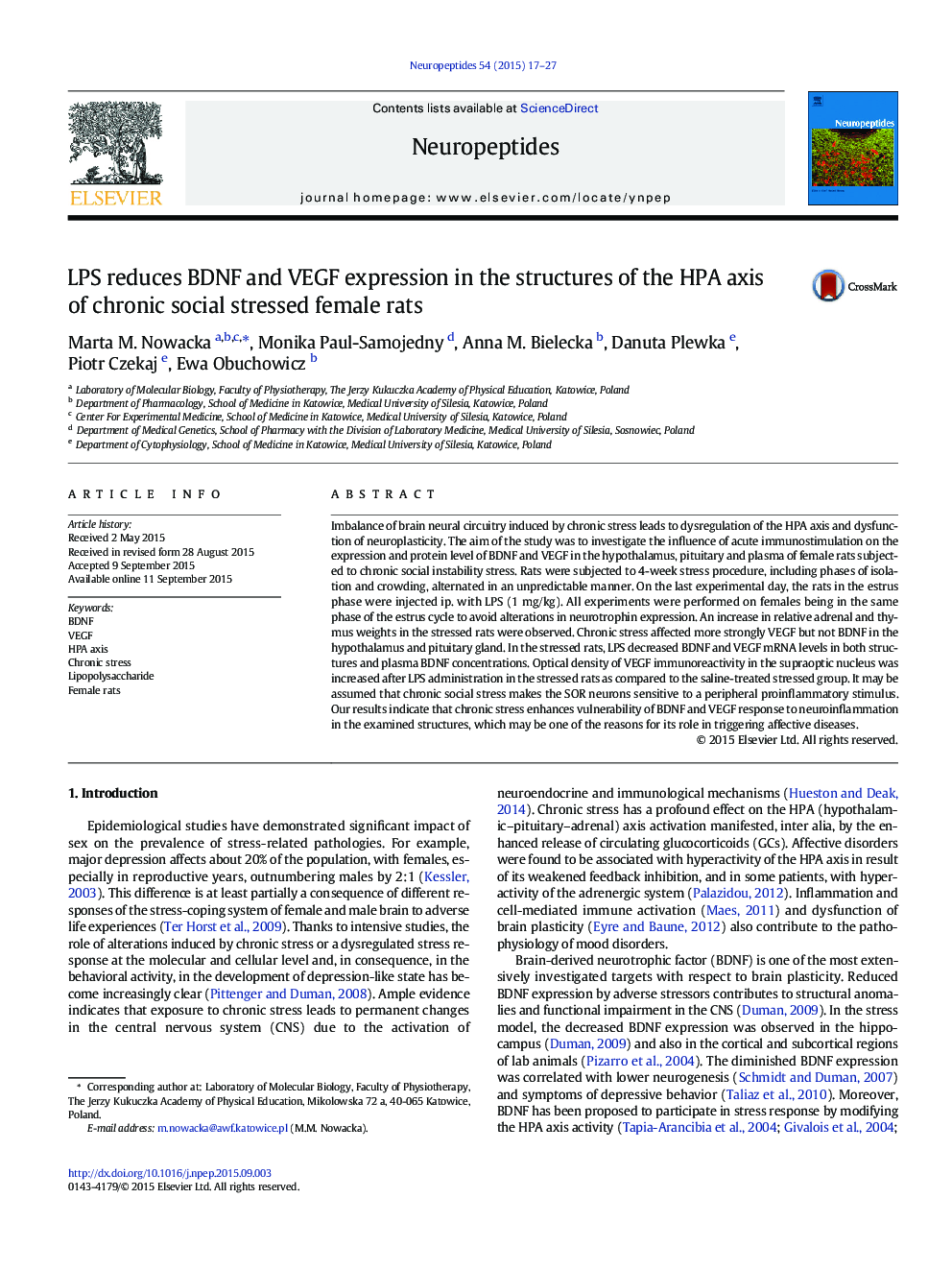| Article ID | Journal | Published Year | Pages | File Type |
|---|---|---|---|---|
| 2807986 | Neuropeptides | 2015 | 11 Pages |
•Chronic stress increases vulnerability of BDNF and VEGF response to the LPS in the HPA.•Stress and LPS affect more powerful the expression of gene encoding VEGF than BDNF.•Neurotrophins might be the important regulators in the adaptation of the HPA axis.
Imbalance of brain neural circuitry induced by chronic stress leads to dysregulation of the HPA axis and dysfunction of neuroplasticity. The aim of the study was to investigate the influence of acute immunostimulation on the expression and protein level of BDNF and VEGF in the hypothalamus, pituitary and plasma of female rats subjected to chronic social instability stress. Rats were subjected to 4-week stress procedure, including phases of isolation and crowding, alternated in an unpredictable manner. On the last experimental day, the rats in the estrus phase were injected ip. with LPS (1 mg/kg). All experiments were performed on females being in the same phase of the estrus cycle to avoid alterations in neurotrophin expression. An increase in relative adrenal and thymus weights in the stressed rats were observed. Chronic stress affected more strongly VEGF but not BDNF in the hypothalamus and pituitary gland. In the stressed rats, LPS decreased BDNF and VEGF mRNA levels in both structures and plasma BDNF concentrations. Optical density of VEGF immunoreactivity in the supraoptic nucleus was increased after LPS administration in the stressed rats as compared to the saline-treated stressed group. It may be assumed that chronic social stress makes the SOR neurons sensitive to a peripheral proinflammatory stimulus. Our results indicate that chronic stress enhances vulnerability of BDNF and VEGF response to neuroinflammation in the examined structures, which may be one of the reasons for its role in triggering affective diseases.
